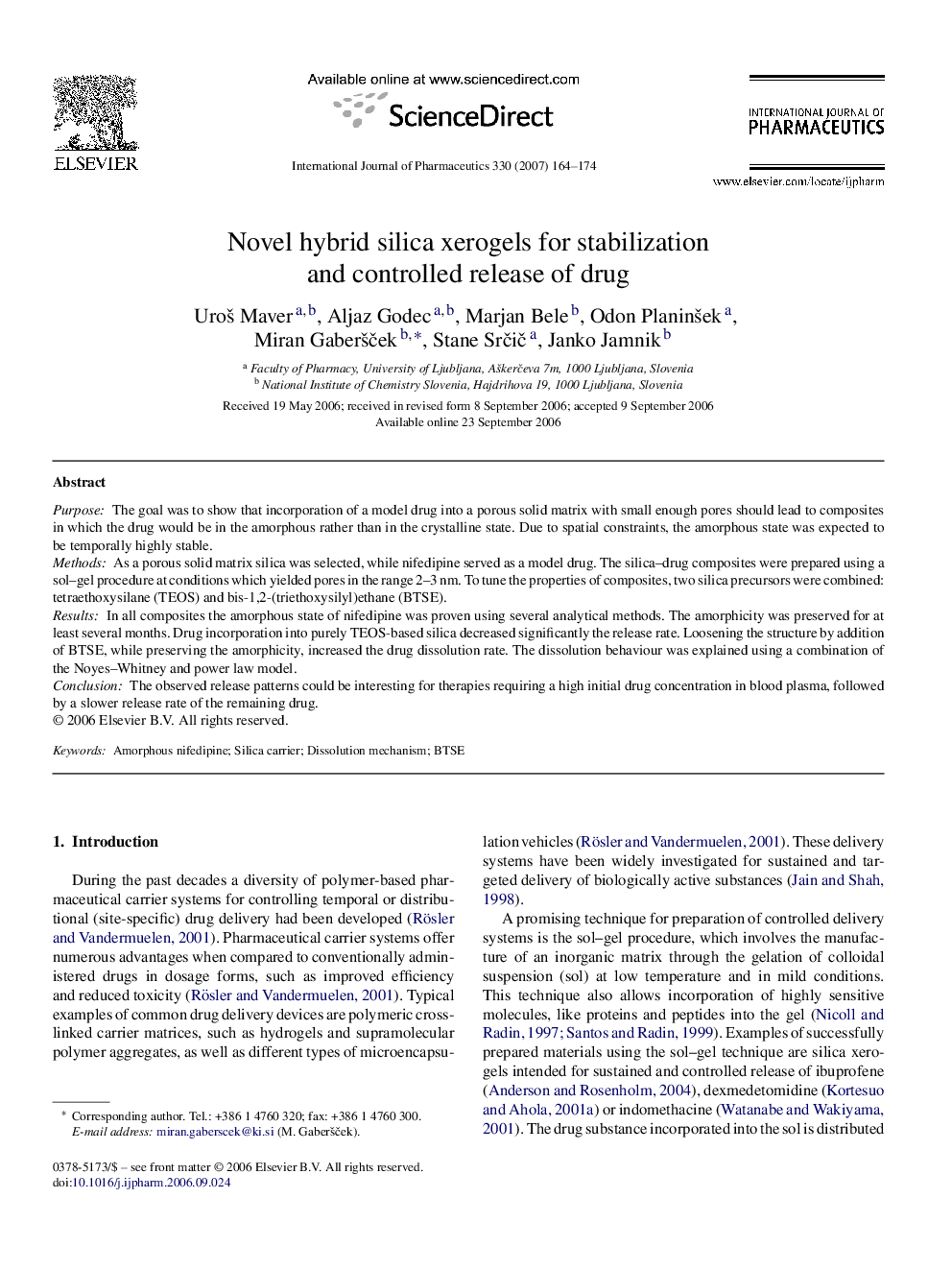| Article ID | Journal | Published Year | Pages | File Type |
|---|---|---|---|---|
| 2506377 | International Journal of Pharmaceutics | 2007 | 11 Pages |
PurposeThe goal was to show that incorporation of a model drug into a porous solid matrix with small enough pores should lead to composites in which the drug would be in the amorphous rather than in the crystalline state. Due to spatial constraints, the amorphous state was expected to be temporally highly stable.MethodsAs a porous solid matrix silica was selected, while nifedipine served as a model drug. The silica–drug composites were prepared using a sol–gel procedure at conditions which yielded pores in the range 2–3 nm. To tune the properties of composites, two silica precursors were combined: tetraethoxysilane (TEOS) and bis-1,2-(triethoxysilyl)ethane (BTSE).ResultsIn all composites the amorphous state of nifedipine was proven using several analytical methods. The amorphicity was preserved for at least several months. Drug incorporation into purely TEOS-based silica decreased significantly the release rate. Loosening the structure by addition of BTSE, while preserving the amorphicity, increased the drug dissolution rate. The dissolution behaviour was explained using a combination of the Noyes–Whitney and power law model.ConclusionThe observed release patterns could be interesting for therapies requiring a high initial drug concentration in blood plasma, followed by a slower release rate of the remaining drug.
